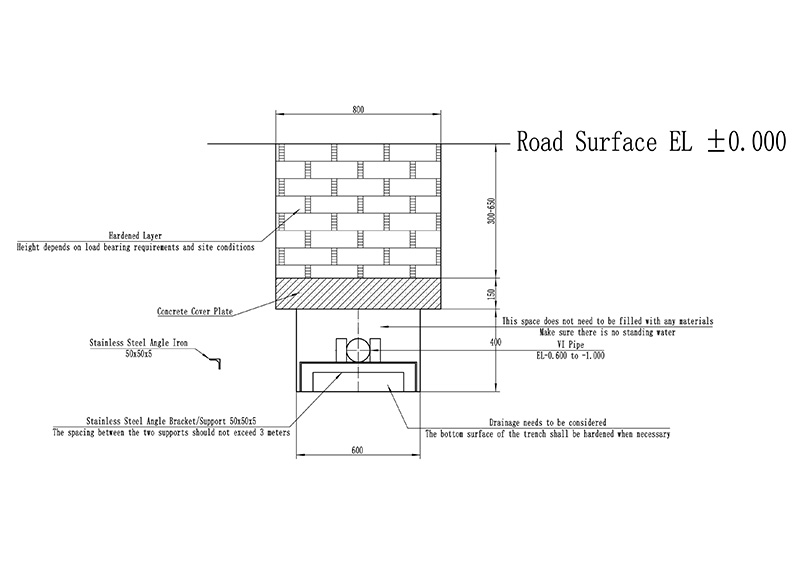In many cases, VI pipes need to be installed through underground trenches to ensure that they do not affect the normal operation and use of the ground. Therefore, we have summarized some suggestions for installing VI pipes in underground trenches.
The location of underground pipeline crossing the road should not affect the existing underground pipe network of residential buildings, and should not hinder the use of fire protection facilities, so as to minimize the damage to the road and green belt.
Please verify the feasibility of the solution according to the underground pipe network diagram before construction. If there is any change, please inform us to update the vacuum insulation pipe drawing.
Infrastructure Requirements for Underground Pipelines
The following are suggestions and reference information. However, it is necessary to ensure that the vacuum tube is installed reliably, to prevent the trench bottom from sinking (concrete hardened bottom), and drainage problems in the trench.
- We need a relative space size to facilitate underground installation work. We recommend: The width at which the underground pipeline is placed is 0.6 meters. The cover plate and hardened layer are laid. The width of the trench here is 0.8 meters.
- The installation depth of VI Pipe depends on the load bearing requirements of road.
Taking the road surface as zero datum, the underground pipeline space depth should be at least EL -0.800 ~ -1.200. The embedded depth of VI Pipe is EL -0.600 ~ -1.000 (If there are no trucks or heavy vehicles passing by, around EL -0.450 will also be OK.). It is also necessary to install two stoppers on the bracket to prevent radial displacement of the VI Pipe in the underground pipeline.
- Please refer to the drawings above for the spatial data of underground pipelines. This solution presents only recommendations for the requirements required for VI Pipe installation.
Such as the specific structure of underground trench, drainage system, embedment method of support, trench width and minimum distance between welding, etc., need to be formulated according to the site situation.
Notes
Be sure to consider gutter drainage systems. No water accumulation in the trench. So, concrete hardened the trench bottom may be considered, and the hardening thickness depends on the consideration of preventing sinking. And make a slight ramp on the bottom surface of the trench. Then, add a drain pipe at the lowest point of the ramp. Connect the drain to the nearest drain or storm-water well.
HL Cryogenic Equipment
HL Cryogenic Equipment which was founded in 1992 is a brand affiliated to Chengdu Holy Cryogenic Equipment Company in China. HL Cryogenic Equipment is committed to the design and manufacture of the High Vacuum Insulated Cryogenic Piping System and related Support Equipment.
For more information, please visit the official website www.hlcryo.com, or email to info@cdholy.com.
Post time: Sep-02-2021







